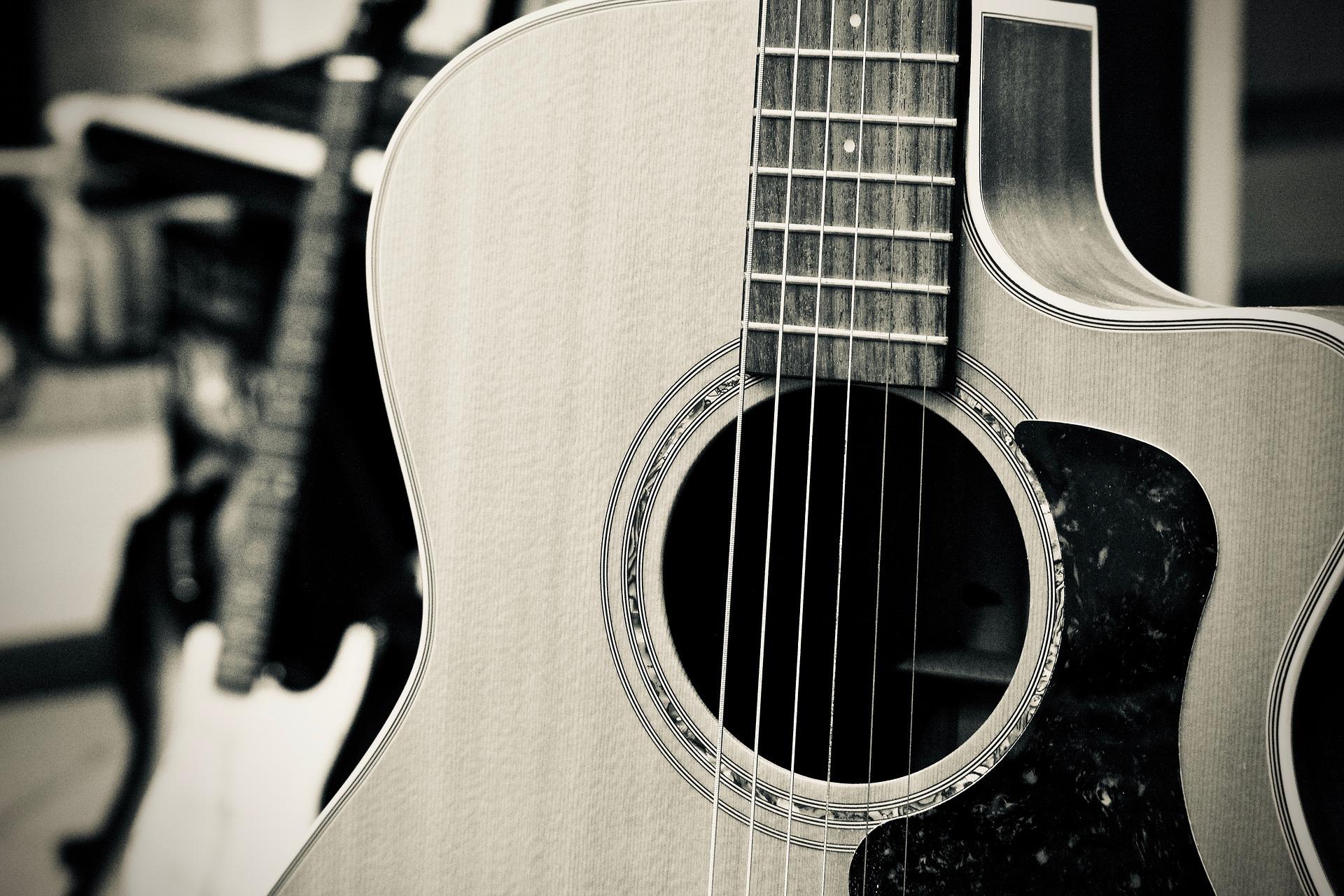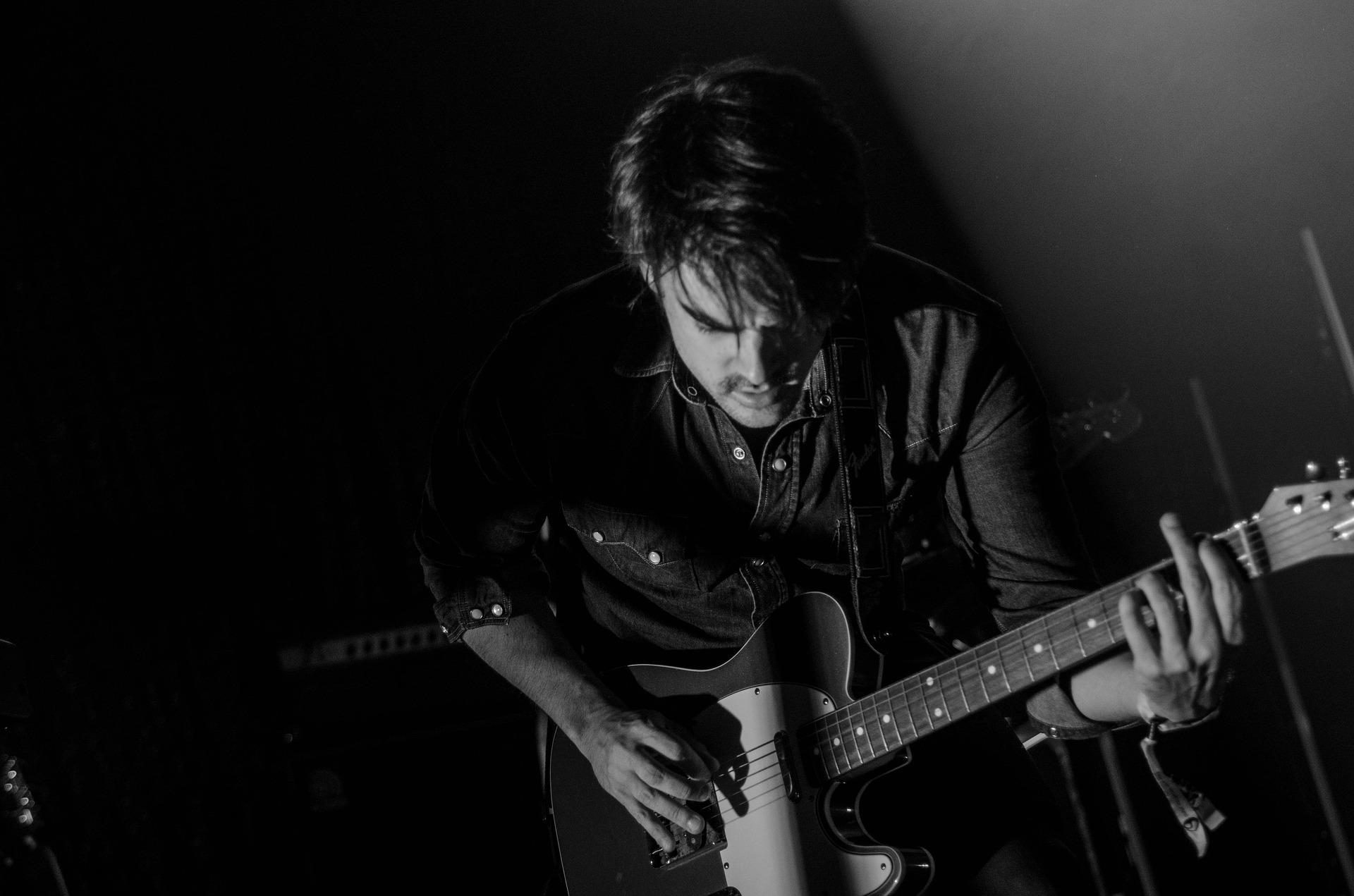If you are dipping your toes into the world of string instruments, knowing the types of guitars available can help you find your perfect match. There are several types of guitar, each with its charm but mainly suited to different styles of music and levels of guitar learners. This is why, for beginners wondering how many types of guitar there are to choose from, the answer could be more straightforward. However, one thing is worth noting: the most prominent ones are acoustic, electric and classical guitars. Any guitar can be broadly categorised into these three types.
Acoustic guitars are the go-to for many starters. They are versatile, don't require an amp, and come in various shapes like dreadnoughts and concert styles, influencing the sound's depth and volume. Electric guitars, on the other hand, cater to those looking to rock out by offering a vast array of sounds when connected to an amplifier. So, depending on each category, picking your first guitar depends on the music you love and aspire to play. Here, we will explore various types of guitars, the differences between them and the price range.

How Many Guitar Types Are There?

If you search for the types of guitar, you may need clarification since there are many varieties of guitar available in the market at present. However, all of these guitars mainly fall under three main categories, as stated above. So, here are the main guitar types with important features.
Acoustic Guitars
Acoustic guitars have a resonant, hollow body that amplifies the vibration of the strings acoustically. The body comes in various shapes, such as the dreadnought, parlour, and jumbo, each affecting volume and tonal quality.
- Cut: Some acoustic guitars have a cutaway in the body, allowing easier access to the upper frets.
- Parts: They typically feature a sound hole, a wooden top, back and sides, a neck with a fretted fingerboard, and a headstock equipped with tuning pegs.
- Number of Strings: Most have six strings, but twelve-string variants are also popular.
- Cords and Frets: Chords are played by strumming or plucking, and the guitar usually has around 18 to 24 frets.
- Size: Sizes can range from 1/4 to full-size, with 4/4 being the standard for adults.
- Type of Sound: Acoustic guitars produce a rich, natural sound that can vary from bright and punchy to deep and mellow, depending on the construction and materials used.
- Standard Tuning: The standard tuning of an acoustic guitar from the lowest (thickest) string to the highest (thinnest) string is E2-A2-D3-G3-B3-E4. This tuning gives the guitar a wide range of notes, from the low E (E2, which is two octaves below middle C) to the high E (E4, which is the E above middle C), plus all the notes in between when playing up the fretboard.
This type of guitar is ideal for beginners and professionals and is perfect for strummers, singer-songwriters, and fingerstyle players.
Electric Guitars
Electric guitars commonly have a solid body, but semi-hollow and hollow-body variations exist. The solid body helps to reduce feedback and is durable.
- Cut: Many electric guitars have double cutaways to allow for easier access to higher frets.
- Parts: They consist of an electric pickup system, volume and tone control knobs, and a selector switch for different pickup combinations. The strings are generally lighter than those of acoustic guitars.
- Number of Strings: Typically six, but seven and eight-string models are also available for a broader range.
- Cords and Frets: They can have up to 24 frets, with some models even offering more for extended-range playing.
- Size: Usually uniform in size, but the scale length (distance between the bridge and the nut) can vary, affecting the tension and feel of the strings.
- Type of Sound: The sound is highly variable and can be shaped by electronic amplifiers and effects, ranging from clean and smooth to distorted and aggressive.
- Standard tuning: Just like an acoustic, the standard tuning for an electric guitar from the lowest to the highest string is E2-A2-D3-G3-B3-E4, which gives you the same basic pitch range as an acoustic guitar in standard tuning. However, many electric guitars have 22 or 24 frets, offering a wider range compared to many acoustics. Those extra frets allow you to reach higher notes on the fretboard.
- Who Can Use It: Suited for rock, metal, jazz, blues, and pop musicians. They are a favourite for those who love to experiment with different sounds.
Classical Guitars
Similar to acoustic guitars but typically smaller and with a wider neck, classical guitars have a flat fretboard and a resonant cavity.
- Cut: They rarely feature a cutaway, as classical guitarists typically do not play on the upper frets.
- Parts: They have wide-neck nylon strings and use a different bracing pattern inside the body for a distinct resonance.
- Number of Strings: Usually six strings.
- Cords and Frets: Chords are often played with a fingerpicking technique, and they have fewer frets, generally 18 or 19.
- Size: Comes in various sizes like the acoustic guitar, with full-size being the standard for adult players.
- Type of Sound: Classical guitars produce a soft, warm, and mellow tone, perfect for classical and flamenco music.
- Classical guitars, known for their nylon strings and warm, rich tones, typically have a standard tuning from the lowest string to the highest of E2-A2-D3-G3-B3-E4, which is the same as that of other guitars in standard tuning. This means they cover a range of about three octaves on the fretboard.
- Who Can Use It: Best for beginners due to the soft nylon strings and for those interested in classical or folk styles or any player looking for a gentler sound.
What is a Bass Guitar?
People also consider Bass guitar as one of the categories. The bass guitar holds down the low end of the music, providing a bridge between rhythm and melody. It is an essential instrument in various musical styles, from rock and jazz to classical music. A standard bass has four thick strings, a longer neck than a regular guitar, and large tuning pegs. It includes pickups, which are often larger than those on a six-string guitar, a volume control, and a tone control. Some basses also offer active electronics with EQ controls for precise tone shaping.
While the traditional bass has four strings, there are five-string and six-string variants for those who need an extended range, typically adding a lower B string and sometimes a higher C string. Bass guitars generally have a longer scale length than regular guitars, usually between 30" (short scale) to 34" (standard scale), with some models extending to 36" for added resonance on low notes.
Different Parts of the Guitar

Before you start learning a guitar, there is something important you should know - the features/parts of a guitar. The guitar is one such instrument which has its entire body crafted very thoughtfully, including the black area beside the hole! Here are the different parts of a guitar and their uses in brief.
- Headstock: This is the top part of the guitar where you will find the tuning pegs or machine heads. These little guys are crucial because they are what you can use to tune the strings to get the right notes.
- Tuning Pegs: They are attached to the headstock, and you can twist them to tighten or loosen the strings, tuning your guitar up or down.
- Nut: This is a small strip situated between the headstock and the neck. It has grooves to hold the strings in place and maintains the correct spacing between them.
- Neck: The long part that you can hold in your hand. It is like the guitar's backbone and has the fretboard on it.
- Fretboard (or Fingerboard): This is the front part of the neck, where you press the strings down to change the pitch of the notes. It is usually marked with dots or inlays that help you navigate to different notes.
- Frets: These are the metal strips that go across the neck. When you press a string down behind a fret, it changes the length of the string when it vibrates, and that changes the sound.
- Body: The large, curvy part that rests against you. It is the guitar's resonator, shaping the sound and projecting it.
- Sound Hole: On an acoustic guitar, this is a big hole in the middle of the body. It is where the sound waves come out.
- Strings: They are usually six, and each one makes a different sound. From thickest to thinnest, they are typically tuned to E, A, D, G, B, and E.
- Bridge: This is where the strings are anchored to the body. It transfers the vibrations of the strings into the body of the guitar, which is what allows you to hear the sound.
- Saddle: It is part of the bridge that supports the strings. It can sometimes be adjusted to change the string height (also known as action).
- Pickguard: Many guitars have a pickguard to protect the body from being scratched by a pick.
Best Guitars Below Rs.5000 (As of 2023)

Are you looking for the best guitar on a budget? If yes, here is a list of the best guitars below Rs.5000.
Kadence Frontier 40" Semi-Acoustic Guitar
The Kadence Frontier is a versatile semi-acoustic guitar that offers a rich sound at a wallet-friendly price. Perfect for beginners, this 40" guitar comes with a spruce top that provides a bright tone, while its lightweight design and smooth fretboard make it easy to handle and play. It is equipped with a pickup and has built-in tuners, allowing for easy amplification if needed.
- The price of the Kadence Frontier 40" Semi-Acoustic Guitar is Rs. 4,999.
Havana AAG 39 Guitar
The Havana AAG 39 is a compact guitar that is great for younger players or those looking for a more portable option. With its 39-inch size, it is slightly smaller than full-sized guitars, making it easier to play for extended periods without fatigue. The sound is surprisingly full for its size, and the build quality is solid for its price range.
- The price of Havana AAG 39 Guitar is Rs. 4400 (prices may vary).
Vault EA20 Acoustic Guitar
Vault's EA20 is designed to offer a balanced acoustic experience with its well-crafted body and smooth playing surface. It boasts durability with its basswood body and rosewood fretboard. This guitar's size and body make it suitable for a variety of playing styles, from strumming to fingerpicking.
- The price of the Vault EA20 Acoustic Guitar is 4,650 (price may vary).
Juarez Fiesta 41 Acoustic Guitar
The Juarez Fiesta 41 is a full-sized guitar that comes in a range of colours, appealing to those who want to stand out. It is built for the practical musician, offering a clear sound and comfortable grip. The build includes a linden wood body and ebony fretboard, and it generally comes with added accessories, making it a complete package for new guitarists.
- The price of this guitar is Rs. 4,450.
Henrix 38C Acoustic Guitar
Ideal for beginners, the Hendrix 38C offers a comfortable playing experience with its 38-inch cutaway design. It is lightweight and easy to handle, with a linden wood top for a warm sound. The guitar is known for its smooth fretboard, which aids new learners in practising chords without the strain on their fingers.
- The price of this guitar is Rs. 3400 (price may vary).
The greatest guitar for a beginner is one that won't break the bank, has a good neck, and is simple to master. Choose a guitar that will serve you well as you learn and grow as a musician by carefully considering the considerations above.
Best Guitar for Beginners (2023)

Yamaha F310 TBS 6-String Acoustic Guitar
The Yamaha F310 presents an excellent choice for beginners with its traditional dreadnought body, giving full, resonant sound and robust projection. Finished in a striking Tobacco Sunburst, this guitar is as visually appealing as it is musically. The F310 TBS features a spruce top and meranti back and sides, contributing to its bright tone and sustained harmony. It is known for its strong build and durability, making it a reliable instrument for learners.
Fender CD 60 Dread V3 DS 6 String Acoustic Guitar
Fender’s CD 60 Dreadnought V3 is a stylish and accessible guitar that delivers quality beyond its price. With a spruce top and mahogany back and sides, it offers a well-balanced sound with ample volume and clarity. It is designed with a 'C' shaped neck, which makes for comfortable chording, crucial for new players. The guitar comes in several finishes, and its dreadnought shape ensures a traditional acoustic experience.
Yamaha F280 Acoustic Guitar
The Yamaha F280 is known for its excellent craftsmanship and quality sound, making it a superb option for those starting their musical journey. It sports a natural finish for that classic acoustic look. With a full-size dreadnought body, learners get to experience strong sound projection and a broad tonal range. It is built with a spruce top and locally sourced tonewoods for the back and sides, which provide a warm tone.
Ibanez MD39C-NT Acoustic Guitar
The Ibanez MD39C-NT offers a comfortable playing experience for novices with its cutaway design, allowing easier access to the higher frets. The guitar features a spruce top and mahogany back and sides, which combine to produce a warm and clear sound. Its natural gloss finish not only makes it an attractive instrument but also protects the wood. Known for their user-friendly neck design, Ibanez guitars are often recommended for learners for their ease of play.
When choosing a guitar, it is wise to consider how it fits your style, the type of music you will be playing, and the feel of the instrument in your hands. Each of these guitars has its unique qualities that make them suitable for beginners and popular among the community. Another important rule of purchasing a guitar is to buy it from a showroom, where you can actually check the sound, how it fits your hand and its durability.
Find guitar classes near me and begin taking classes with a professional teacher on Superprof!
Résumer avec l'IA :
























